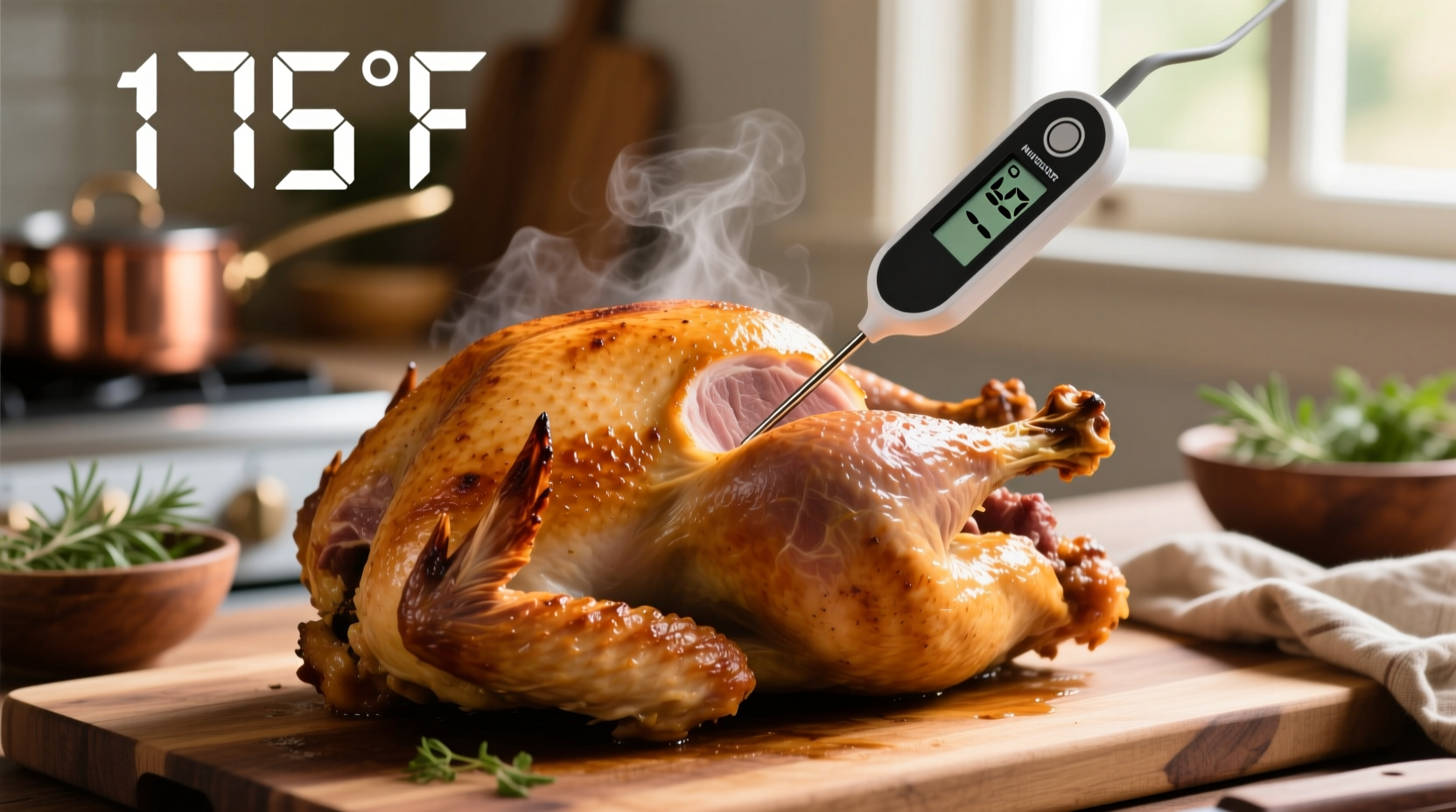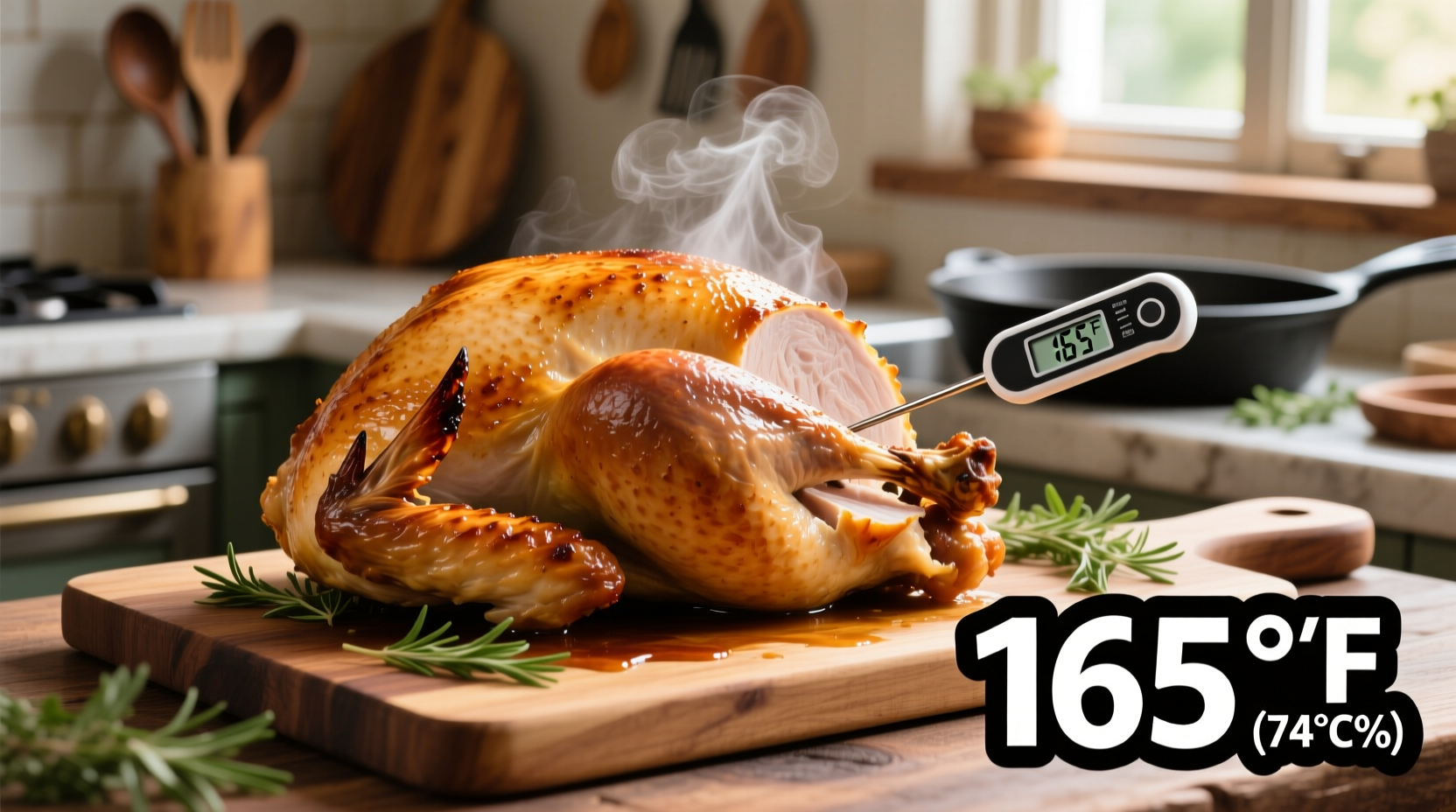Getting turkey breast temperature right separates a succulent holiday centerpiece from a dry, potentially unsafe meal. Whether you're preparing a simple weeknight dinner or hosting Thanksgiving, understanding precise cooking temperatures ensures food safety without sacrificing quality. This guide delivers science-backed temperature guidelines, practical cooking methods, and professional techniques to achieve perfectly cooked turkey breast every time.
Why 165°F Is Your Turkey's Safety Threshold
The USDA Food Safety and Inspection Service mandates 165°F (74°C) as the minimum safe internal temperature for all poultry products. At this temperature, harmful pathogens like Salmonella and Campylobacter are instantly destroyed. While food science shows these bacteria die at lower temperatures given sufficient time (145°F for 8.5 minutes), 165°F remains the gold standard for home cooks due to its instant kill rate and margin of safety.
| Temperature | Bacterial Kill Time | Practical Application |
|---|---|---|
| 145°F (63°C) | 8.5 minutes | Requires precise timing; not recommended for home cooking |
| 150°F (66°C) | 2.8 minutes | Suitable for sous vide with professional equipment |
| 155°F (68°C) | 50 seconds | Acceptable with careful monitoring |
| 165°F (74°C) | Instant | USDA-recommended standard for home cooks |
This temperature standard evolved significantly since the 1970s when 180°F was commonly recommended. Modern food safety research, documented in the USDA Food Safety and Inspection Service guidelines, recognizes that lower temperatures can be safe with proper time management, but maintains 165°F as the practical benchmark for consumers.
Essential Tools for Temperature Precision
Accurate temperature measurement requires the right tools:
- Digital instant-read thermometer: Provides readings in 2-5 seconds (Thermapen-style)
- Leave-in probe thermometer: Monitors temperature continuously during cooking
- Calibration check: Verify accuracy using ice water (32°F/0°C) or boiling water (212°F/100°C)
Professional chefs consistently emphasize thermometer placement in the thickest part of the breast, avoiding bone contact. Insert the probe horizontally from the side for most accurate readings in turkey breast. Remember that carryover cooking will raise the internal temperature 5-10°F after removal from heat, so pull the turkey at 160-162°F for optimal results.

Cooking Methods and Timing Guide
Different cooking methods require specific temperature management:
Oven Roasting (Most Common Method)
Preheat oven to 325°F-350°F. Roast uncovered until thermometer reads 160-162°F in thickest part (approximately 20-25 minutes per pound). The temperature will rise to 165°F during resting. Higher oven temperatures (400°F+) create better browning but require closer monitoring to prevent overcooking.
Sous Vide Precision Cooking
Set water bath to 145-150°F for 1.5-4 hours depending on thickness. Sear briefly after cooking for texture. This method allows precise temperature control below traditional safety thresholds while maintaining safety through time management.
Grilling or Smoking
Maintain indirect heat at 275-350°F. Use a two-zone fire setup. Cook until thermometer reads 160-162°F, then rest. Smoking at lower temperatures (225°F) requires longer cooking times but yields exceptional flavor.
Troubleshooting Common Temperature Issues
Dry turkey despite correct temperature: Often caused by uneven thickness. Solution: Butterfly thicker portions or use a salt brine (1/4 cup salt per quart of water) for 4-12 hours before cooking to improve moisture retention.
Temperature stalls: During slow cooking, evaporation can cause temperature plateaus. Solution: Continue cooking patiently—this is normal and doesn't indicate a problem.
Uneven cooking: Position turkey breast-side up with thicker portions toward heat source. Rotate pan periodically for even exposure.
Resting and Carving for Perfect Results
Rest turkey breast for 10-15 minutes before carving. This allows juices to redistribute throughout the meat. Cover loosely with foil to retain heat without causing steaming. During this critical resting period, the internal temperature will rise to the final 165°F while the meat fibers relax, resulting in significantly juicier slices.
When carving, slice against the grain with a sharp knife for maximum tenderness. Properly rested turkey breast should yield clean slices without excessive juice pooling on the cutting board—a sign of optimal moisture retention.











 浙公网安备
33010002000092号
浙公网安备
33010002000092号 浙B2-20120091-4
浙B2-20120091-4